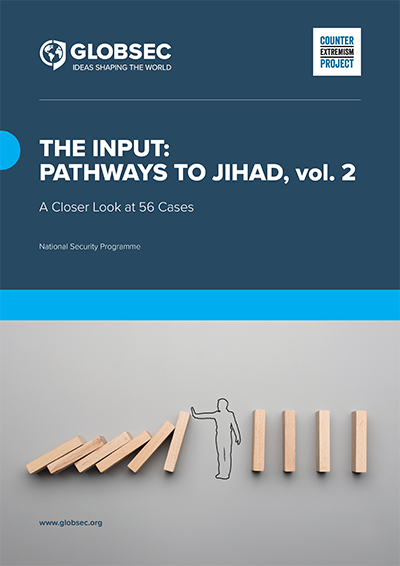Pathways of Radicalization of European Jihadist pt. 2

This second report picks up where the previous report published within the framework of the project run by GLOBSEC and the Counter Extremism Project, The Input: Pathways to Jihad. A Thematic Analysis of 310 Cases. In that report, the authors mapped the thematically studied pathways towards jihad of the 310 individuals included in their database of European jihadis. Eight such pathways were identified, i.e., dissatisfaction and outrage, radicalism or “thuggish” nihilism as an antechamber to global jihad, previous criminal involvement as a springboard into global jihad, prison as a key but understudied and misunderstood hub of jihadi recruitment, the “glocal” nature of recruitment into jihad, role of the family in the radicalisation process, the ongoing inflammatory character of certain places of worship as recruitment hubs, and European jihadism as a conveyor belt for sending fighters towards conflict zones in the broader MENA region.
This report goes beyond the mapping exercise and looks more closely at the individual pathways of 56 individuals from six countries. Their cases have been chosen because of the availability of information related to their jihadist pasts and because their past life stories vividly demonstrate the practical ins and outs of what a pathway towards jihad looks like in the current European setting.
What the authors found repetitive in all these stories is that ISIL and its recruiters were skilful at exploiting very specific vulnerabilities of their recruits. Some felt oppressed due as a minority, others because of their family background. Then there is the issue of imprisonment and how vulnerable one is once behind bars. What is more, some were born into families with existing extreme religious views that could, to some extent, have accelerated their progression on the pathways to jihad.
In the end, the authors are of the opinion that this snapshot can be divided into two subgroups, nicknamed “the runaways” and the home frontsmen. The first group comprises individuals who are more keen ideologues, but who also, it seems, are trying to fix something from their past, and consequently seeking to restart their lives while fighting for ISIL in Syria. This truly constitutes “running away” from something. The second group—born into radical families or living in neighbourhoods were radicals were active for years. For these individuals, the opportunities at home were far greater and maybe there was no need for travel.
